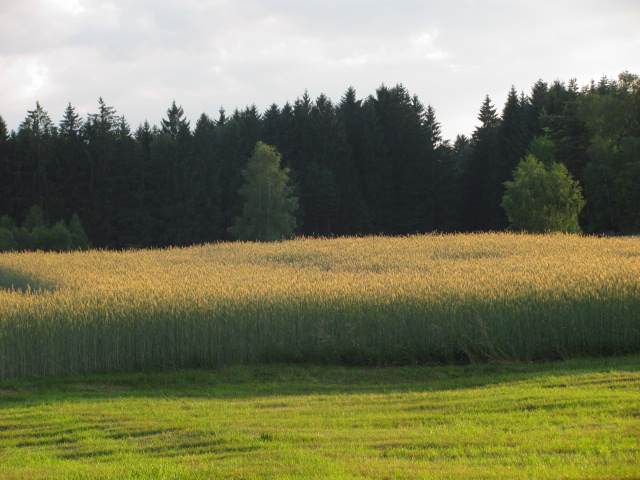 |
| A clear difference in albedo between forests and croplands. Source: usagi-hikari9 |
 |
| Difference in surface temperature (oC) in 2150 with deforestation at a A)Global, B)Linear sum of the regional, C)Boreal, D)Temperate, E)Tropical scale compared to current projection. Source: Bala et al. |
Bala et al. predict a global cooling resulting from deforestation. The used 3D climate and carbon model to simulate large-scale deforestation. The model gives more weight to CO2 removal than similar models, so Bala et al. expect an even greater cooling than reported. The simulations were latitude based, and forest were allowed to expand in areas not currently deforested. Boreal deforestation (Map C) has the largest cooling effect with minimal increase in CO2 levels. Tropical deforestation (Map D) causes warming, and temperate deforestation (Map E) causes minimal warming. Both show a substantial increase in CO2 levels. The global level of net cooling seems to be linearly related to the individual regions (very similar maps for A & B).
Bala et al. do not insist on immediate total deforestation, they recognize the vital role that forests fill outside of climate control. They recommend focusing afforestation projects to the tropics. Temperate and boreal afforestation projects should be met with skepticism.
Montenegro et al.'s assessment showed cooling when there was afforestation at any latitudes. They used satellite data to create a model with 5-25 km resolution. They only looked at converting current cropland, and their albedo difference between forest and cropland was much smaller than other estimates. This showed that benefits from afforestation were not rigidly marked along latitudinal lines. Two graphs, showing the maximum and the minimum cooling as a result of afforestation so highly localized patterns. Russia, surprisingly, shows very high benefits no matter the conditions. Montenegro et al.'s model allows precise evaluation of individual projects.
 |
| Difference in net drawdown (kg/m2) for afforestation compared to current draw down. Minimum net drawdown conditions maximize albedo difference between crops and forest and minimize the carbon storage of trees. Maximum net drawdown conditions minimize albedo difference and maximize storage. Source: Montenegro et al. |
By creating a latitude based analysis Bala et al. fall into the 'wide-brush' trap described by Montenegro et al. There is the possibility that they ended up overestimating the albedo of forests because they accounted for afforestation in unsuitable areas. Montenegro et al.'s minimal conditions align best with Bala et al.'s findings, with the exception of Russia. If Bala et al. were correct concerning linear global scaling, afforestation in Russia should cool the earth despite being in the Boreal zone.
No comments:
Post a Comment